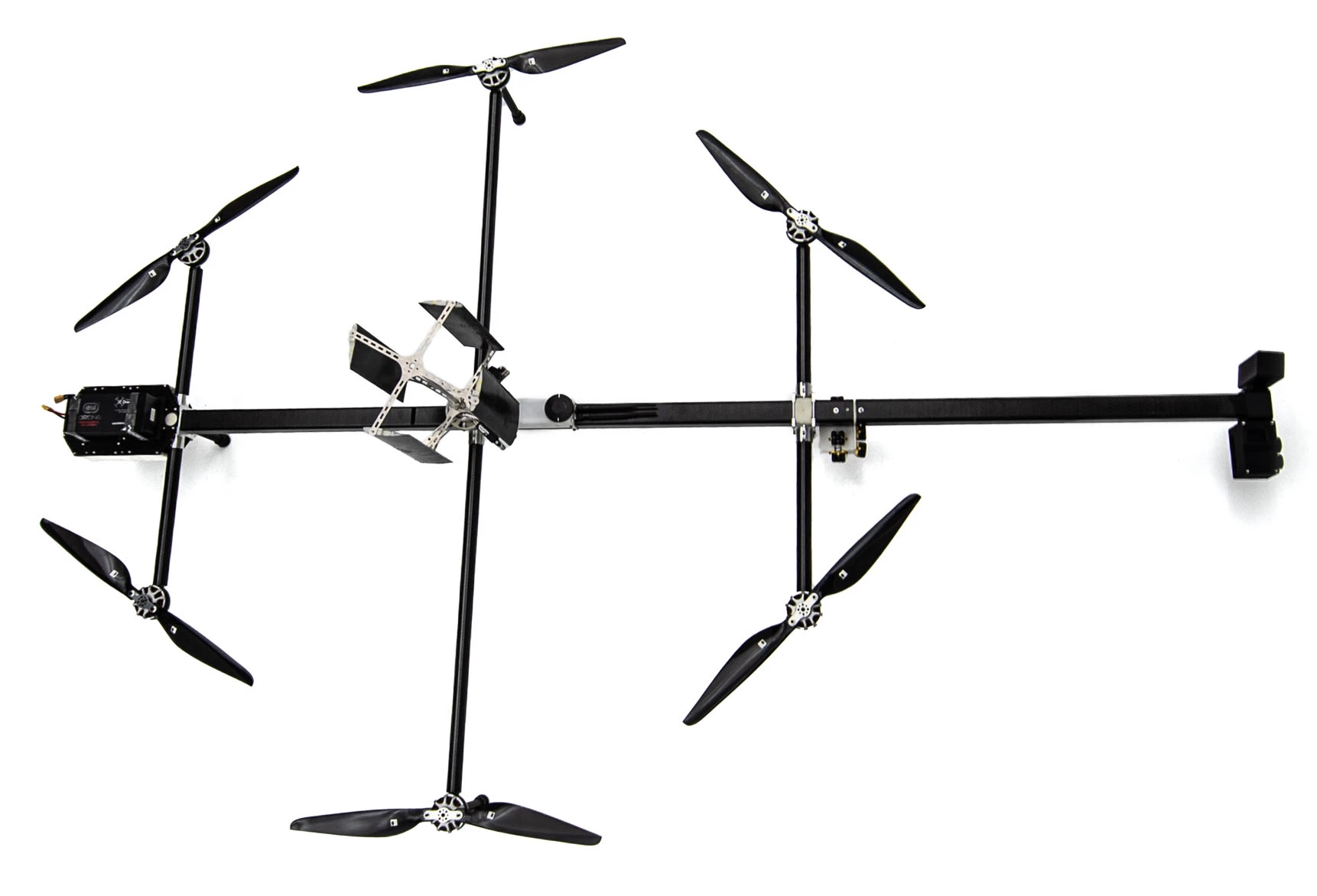Most drones need to tilt to move and correct against gusts of wind. Pitch Aero's Astria, however, can keep itself preternaturally level and stable, thanks to a novel use of cyclorotors that opens up a range of use cases other drones can't handle.
Cyclorotors, also known as Voith-Schneider propellers, push air something like a paddle steamer pushes water. Each is a spinning barrel, with blades along the sides capable of varying their pitch extremely quickly to vector thrust almost immediately in 360 degrees.
Groups like CycloTech, Yamato and Russia's Foundation for Advanced Research are pushing forward in various efforts to commercialize and militarize cyclorotors as the sole propulsion system in electric and hybrid VTOL aircraft. Their unique packaging and near-instant thrust vectoring capabilities offer some advantages that standard propellers, tilt-rotors and other solutions can't.
We've never seen one put to use like this before, though. Pitch Aeronautics, out of Boise, Idaho, has stuck a cyclorotor on top of its Astria drone to give it a set of up-close and touch-based capabilities unmatched by anything else we've seen.

The Astria, named for the Greek goddess of precision, is a relatively large drone, but completely collapsible for transport. Its central beam is maybe 10 ft (3 m) long, and it rises into the air on six twin-bladed propellers mounted out wide on poles.
At one end of the main beam sits the battery pack, and on the other end, you can stick a variety of tools, sensors, robotic arms and other payloads weighing from 5 to 10 lb (2.25 to 4.5 kg). The battery pack balances this load, so your payload sits way out in front of the propellers, right up against the target you're working with.
Where other drones need to tilt in order to balance themselves against gusts of wind or achieve horizontal movement, the Astria stays preternaturally still and level in the air. That cyclorotor on the top takes over all horizontal thrust duties, spinning at all times and merely varying blade pitch to redirect thrust whenever required, as outlined in the video below.
It's some 5 to 10 times quicker at making stability corrections and horizontal position adjustments than a typical multicopter setup, Pitch claims, because tilting a drone takes longer than simply varying the pitch on the cyclorotor blades.
This gives the Astria the ability to place its payloads super-close to a target, with exceptional precision and stability, and even to touch it if necessary. The company says Astria can now take over a bunch of high-precision industrial inspection and maintenance tasks that would typically require workers to place themselves in extremely risky rope-based positions. Think wind turbine blade inspections, placing bird diverters on high-voltage power lines, precise bridge crack measurements, these kinds of things.
"The industry thought that drones would supplant these types of inspections," says Pitch Aero co-founder and Chief Engineer Zach Adams in a promo video, "but it turned out they cannot do that because of the way they move."

The company has built, tested and patented the Astria configuration, as well as an FPV and control system to match. It's also developed some swappable payload arms with instrumentation, tools and robotic arms suited to these initial tasks, including an active thermography sensor that can heat the surface of an object, then image it with a thermal camera to look for structural weaknesses, and a crack width measurement sensor that gets up close to provide fast and highly accurate crack tracking.
Pitch says the initial 10-lb max payload will soon be greatly increased, and a bird diverter installation kit is under development in conjunction with Boise State University and Power Engineers that'll allow the drone to hang things off live power lines, an operation that currently requires workers to hang out of helicopters.
Other payloads under development would be able to install vibration dampers and marker balls on power lines, perform ultrasonic and eddy current testing on steel structures, or even start doing jobs like cleaning, painting, window washing and drilling.
It's a very neat application of cyclorotor technology that seems to have promising potential. We look forward to seeing how the Astria develops from here. Check out a more business and use-case focused video below.
Source: Pitch Aeronautics
















